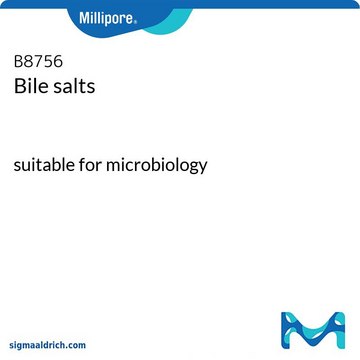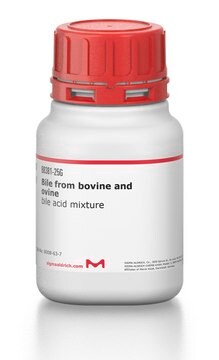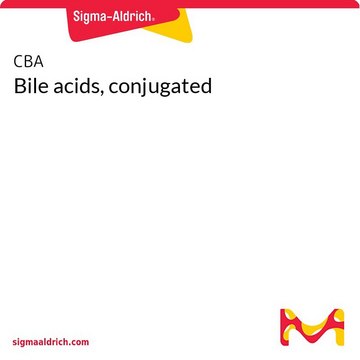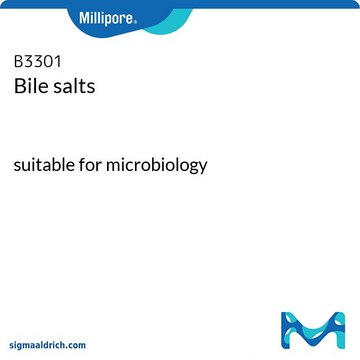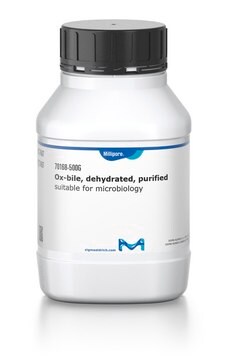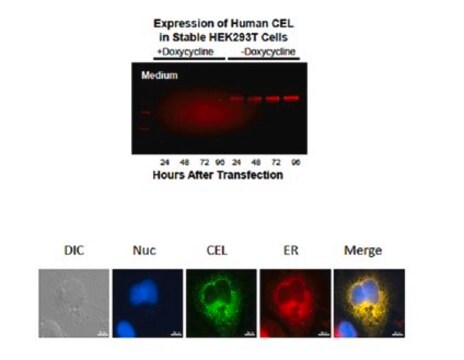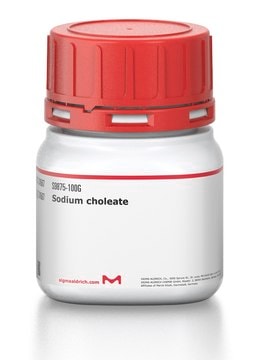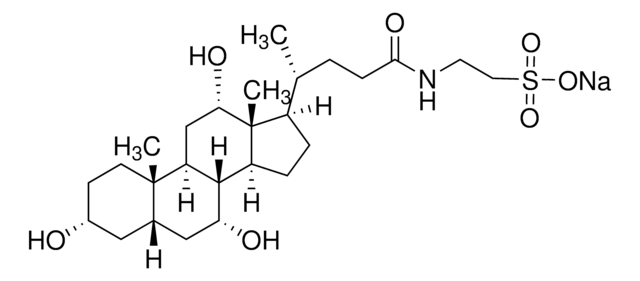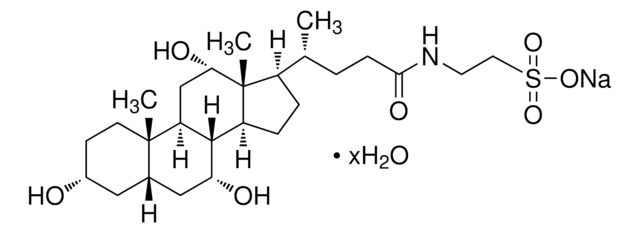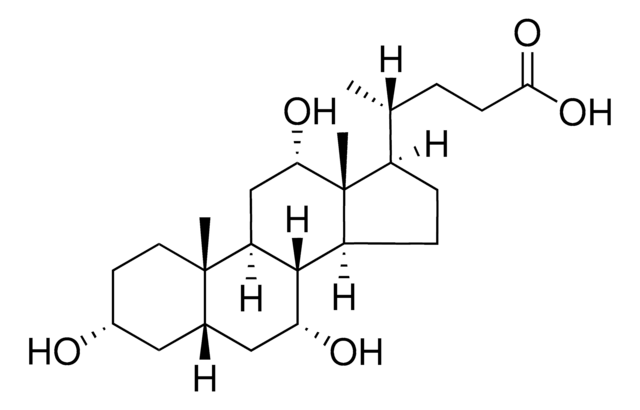48305
Bile salts
suitable for microbiology
Sinónimos:
Bile acids sodium salt, cholic acid-deoxycholic acid sodium salt mixture, Bile acids sodium salt, Cholic acid-Deoxycholic acid sodium salt mixture
About This Item
Productos recomendados
description
anionic
Quality Level
sterility
non-sterile
assay
40-60% (Cholic Acid ; approximately 50% sodium cholate and approximately 50% sodium deoxycholate, HPLC)
form
powder
composition
cholic acid sodium salt, ~50%
deoxycholic acid sodium salt, ~50%
impurities
≤5% water
loss
≤5% loss on drying (water)
solubility
H2O: 0.1 g/mL, clear, faintly yellow
application(s)
microbiology
storage temp.
10-30°C
General description
Bile salt is an organic sodium salt with a conjugate of any of the bile acids along with either glycine or taurine. Biles salts are composed of four different kinds of bile acids - cholic, deoxycholic, chenodeoxycholic and lithocholic acids.
Bile salts are extracted under controlled conditions from purified fresh bile, to be used in bacteriological culture media, where it behaves as a selective inhibitory agent that enables isolation and identification of pathogens. For example, in MacConkey Agar/Broth.
Application
Biochem/physiol Actions
Storage Class
11 - Combustible Solids
wgk_germany
WGK 3
flash_point_f
Not applicable
flash_point_c
Not applicable
ppe
Eyeshields, Gloves, type N95 (US)
Elija entre una de las versiones más recientes:
¿Ya tiene este producto?
Encuentre la documentación para los productos que ha comprado recientemente en la Biblioteca de documentos.
Los clientes también vieron
Artículos
Culture media provides a habitat with suitable nutrients, energy sources, and certain environmental conditions for the growth of microorganisms. The components of the culture media range from simple sugars to peptones, salts, antibiotics, and complex indicators.
Nuestro equipo de científicos tiene experiencia en todas las áreas de investigación: Ciencias de la vida, Ciencia de los materiales, Síntesis química, Cromatografía, Analítica y muchas otras.
Póngase en contacto con el Servicio técnico